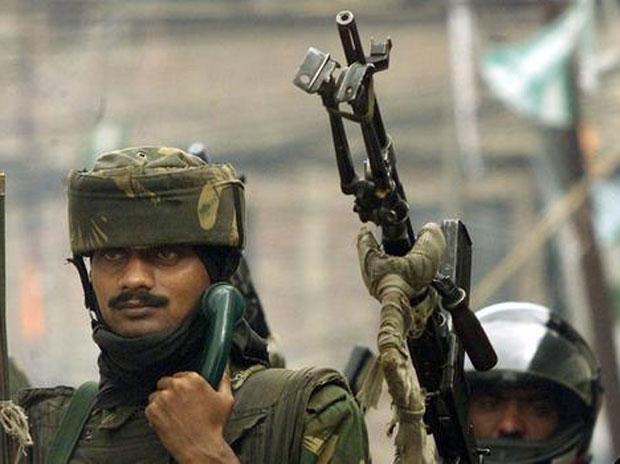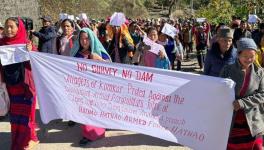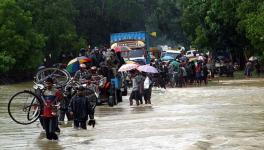The State’s First Line of Defence

Image Courtesy: Business Standard
It has been reported that the Armed Forces (Special Powers) Act, 1958 (AFSPA) has been withdrawn entirely from Meghalaya and parts of Arunachal Pradesh with the exception of 8 police stations along the Assam border as well as the three districts: Tirap, Changlang and Longing. While the Arunachal Times has called the move ‘commendable’, the point is that there was never any need to impose AFSPA in these states
The Armed Forces (Special Powers) Act, 1958 was first imposed in the Naga Hills. It has been imposed in different border states at various points of time since then. Due to the Naga insurgency, AFSPA was brought to the hills of Manipur and then North-East Frontier Agency (NEFA – now Arunachal Pradesh). It was imposed in Mizoram during the Mizo National Front (MNF) insurgency, and was later was imposed on the whole of Manipur when the Meitei uprising began. When United Liberation Front of Assam (ULFA) became a power to be reckoned with, AFSPA was implemented in Assam, and later in Meghalaya. In the 1990s, due to the uprising in Jammu and Kashmir, AFSPA was imposed in the state.
The Act has been criticised by the United Nations (UN). The Justice Jeevan Reddy Committee also had recommended that it be replaced by a more humane legislation. The Act is routinely called ‘draconian’ and rightly so. In Naga Peoples Movement for Human Rights, the Supreme Court issued procedural guidelines to the Armed Forces. However, there is little evidence that these guidelines have been strictly followed.
Arunachal Pradesh has never had any homegrown insurgent outfits apart from the short-lived Arunachal Dragon Force, which was prevalent in the Eastern part of Arunachal Pradesh. However, Arunachal Pradesh, due to the thick forest cover over most of its area, became a favoured transit route for militants from other states such as ULFA, National Socialist Council of Nagalim (NSCN) as well as all the breakaway factions, and the valley-based Manipur militant groups. The districts Tirap, Changlang and Longding are along the border of Myanmar, and are more porous than the districts on the other stretches of the Indo-Myanmar border. Hence, AFSPA being imposed in these districts may not come as a surprise. However, considering that Arunachal Pradesh has hardly provided ideologically motivated manpower to any of these groups, the most important first step should have been improved policing.
Meghalaya faced another similar dilemma. The state has seen the rise and fall of six homegrown militant groups in its history. The first was the Hynniewtrep Achik Liberation Council, which split into the Hnniewtrep National Liberation Council and the Achik Matgrik Liberation Army. Both groups are now defunct. Later the Achik National Volunteer Council and the Liberation of Achik Liberation Elite Force were formed along with the People’s Liberation Front of Meghalaya. These groups all agreed for the talks with the government, and surrendered. The last group to be formed and surrender was the Garo National Liberation Army. The fact that the life of each militant group lasted for only about 5-10 years should say something about their motivations and politics. What is surprising is that for groups roughly the size of a regular criminal gang, AFSPA was used. To be fair, the reason for imposing AFSPA was also related to ULFA using Meghalaya as a corridor for its camps in Bangladesh at the time.
In both the cases – Arunachal Pradesh and Meghalaya, the locally formed militant groups would never have had access to the sophisticated small arms that they possessed, had the states not been used as transit routes for the larger groups from Assam, Manipur and Nagaland. Therefore, had policing been effectively implemented, the groups would have been criminal gangs or pressure groups with lumpen elements mixed in, at the most.
Another issue that ought to be highlighted is the fact that grievances from the periphery seem to be met first with an iron fist, then AFSPA is used to bring the parties to the negotiation table. In some cases such as that of the Dima Halom Daogah. Jewel Garlosa, the group leader’s arrest was more of a well-orchestrated surrender. Therefore, the end of one batch of militants seems to make way for the next generation of frustrated unemployed youth to pick up the torch (or guns). However, the underlying structures that seem to perpetrate this never-ending cycle of rebirth, never undergo a transformation. It is known that ULFA, in its early years, perfected the art of raising funds. It did so with such bureaucratic efficiency, that other groups also adopted their methods. Their favourite targets were the corrupt officials in the state administration. At present, the NIA’s investigation into former Nagaland CM T R Zeliang’s role in a ‘terror-funding’ case should not come as a surprise considering that this structure has never been challenged by the government.
However, AFSA is brought in to ‘support’ the civilian government in discharging its duties on the law and order side. Ironically the CBI or the ED is never brought in for the same purpose. At the most, these two agencies are used to settle political scores. In the instance of the older, more enduring militancies, dialogue is the only way forward. However, the intelligence agencies of the Indian state have spent so much effort in splintering each group that bringing all of them to the table for a negotiation would be a herculean task. However, this is a separate issue altogether. Therefore, while revoking AFSPA from the whole of Meghalaya and parts of Arunachal Pradesh is a positive step, improving the state administration is a better solution.
Get the latest reports & analysis with people's perspective on Protests, movements & deep analytical videos, discussions of the current affairs in your Telegram app. Subscribe to NewsClick's Telegram channel & get Real-Time updates on stories, as they get published on our website.
























